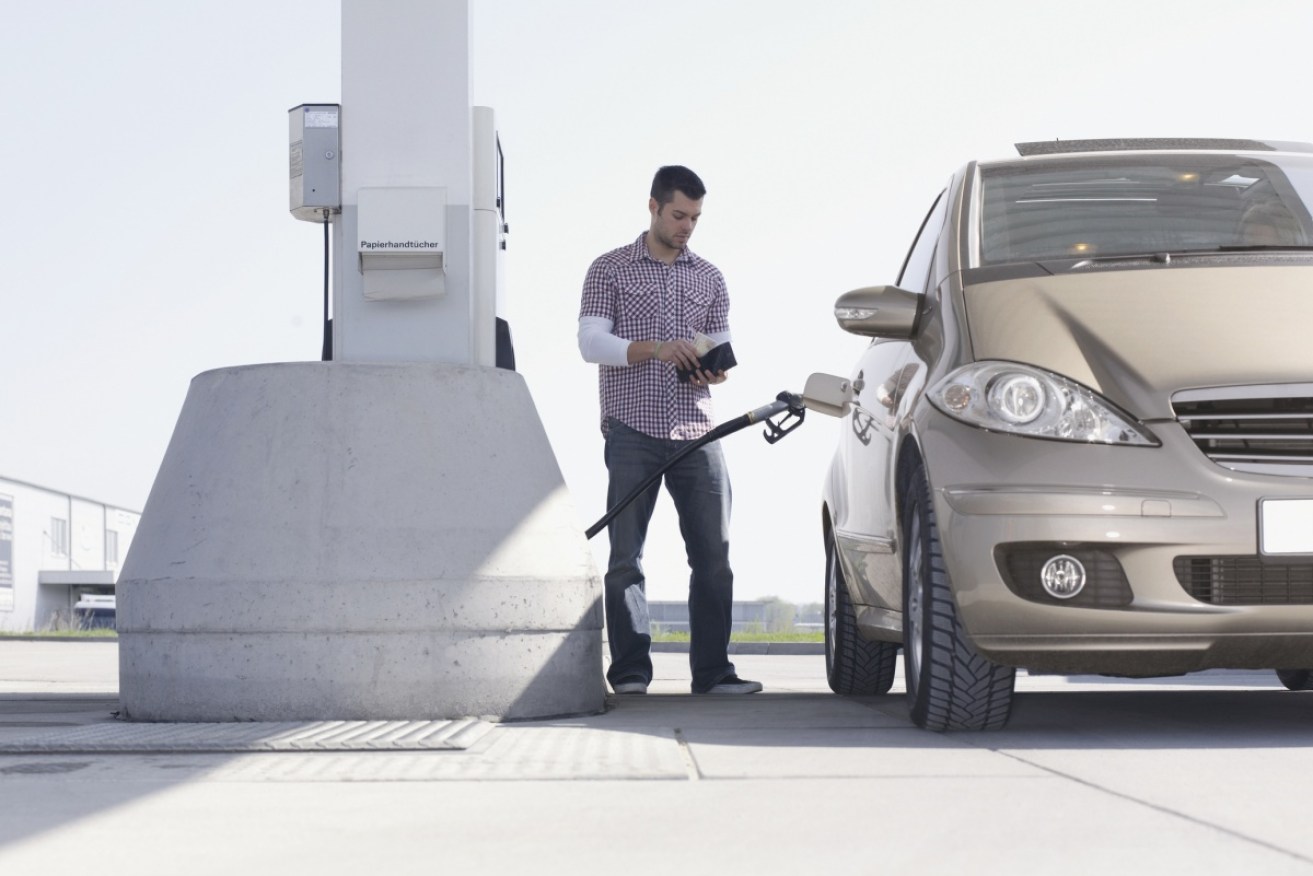Race against time: Keep the change – another year of cheap petrol


Savings at the bowser are helping keep consumer confidence high. Photo: Getty
In many ways Australian economic policy has become a race against time.
The pressure is on to build a more diversified economy on top of the waning mining and housing finance booms, before global shocks throw the whole thing off course.
So far, we’ve been relatively lucky. Like a soccer team given extra time to score a goal, the Australian economy has been given more breathing space by global conditions than many economists predicted.
In this and two subsequent articles I’ll consider three ‘reprieves’ that are assisting Australia’s post-boom transition.
The first is what I’ve previously called the ‘petrol stimulus’ – cheap fuel at the bowser that has been leaving $20 or $30 a week in householders’ wallets.
While it seems a distant memory, back in 2008 a surge in oil speculation pushed crude prices above $US150 a barrel, and saw Australia’s national average unleaded price top $1.60 a litre, with some individual service stations charging much more.
City trains were packed full of commuters keen to avoid filling up their cars.
That price spike did not last long, however.
When world stock markets plunged in October 2008, global economic growth did likewise and demand for petrol fell dramatically.
It then started grinding higher again after the co-ordinated global stimulus programs of 2009.
The oil wars
Then, in mid-2014, a price war erupted.
Members of the Organisation of Petroleum Exporting Countries flooded markets with cheap oil to see off competition from emerging producers – particularly the US shale oil industry.

Saudi oil has kept oil prices at rock bottom.
Major exporters such as Saudi Arabia thought a couple of years of low prices would send companies in new oil fields broke, thereby allowing OPEC producers to raise prices again some time this year.
That hasn’t worked. For one thing, the cost of extracting shale oil has fallen as much as 65 per cent in the past two years forcing countries such as Saudi Arabia, Russia and the now embargo-free Iran to keep pumping and selling oil at a loss.
The International Energy Agency notes in its latest Oil Market Report that “despite oil’s [price] collapse and resulting investment cuts, global oil production is still expanding” and that “supply will continue to outpace demand at least through the first half of next year”.
This means that the current oil price of around $47 a barrel is unlikely to rise much, and is therefore likely to keep bowser prices low well into 2017.
The extra $20 or $30 a week households have to spend on other things feeds into consumer confidence, which has held virtually steady for six months, according to Wednesday’s Melbourne Institute/Westpac Bank survey.

Another year of cheap petrol would be handy for most households.
So an extra year’s cheap petrol is very useful indeed.
On the flip-side, the history of supply gluts suggests that a pronounced rebound is likely, if too much production capacity is mothballed during the glut.
All business leaders and governments need to be mindful of this. If retail spending is weak now, for instance, watch what happens if we’re paying $1.70 for petrol in a year’s time.
What individuals do with the money they’re saving right now is their business, of course, though stashing a bit away to cushion the shock of higher petrol next year might not be a bad idea.
Read more columns by Rob Burgess here.









